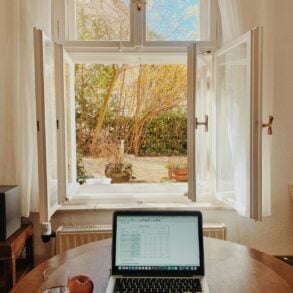
Planet Earth would be nothing without its trees. In fact, humans probably would not be here. We have relied on them for thousands of years for our oxygen, for fuel, and for their ability to provide versatile materials for a whole range of projects. We learned a long time ago that there are many different types of wood, each with its own qualities and uses like this charred wood tumbler for example or the world’s most expensive surfboard. Some are rarer than others, demanding higher prices. These are often protected these days – though illegal logging presents a serious threat. Expensive woods are usually reserved for the rich, leaving the cheaper varieties for everyday use.
Most of us have heard of the more common types, but what about the expensive woods? It is safe to say that few will recognize them.
So, let’s take a look at three of the most expensive woods on the planet…
AfricanAfrican Blackwood (Grenadil)
One of the rarest woods on Earth, African Blackwood is under threat of extinction and is listed as an ‘endangered species’. It is prized for its deep color, ranging from red to black and the wood is usually used to make musical instruments. The trees are sawn into logs and left to dry, with a ring of yellow sapwood left on to prevent it from cracking. The wood is durable but extremely hard to work, and even the sharpest tools soon become blunt. A lack of regulation in African harvesting law (specifically in the arid areas of Mozambique and Tanzania where they are mostly found) means that these beautiful trees are in danger of being lost. Each tree takes 60 years to reach maturity.
In terms of value, although it can fluctuate and reach higher prices, a kilogram of African Blackwood is generally worth $10,000.
Agarwood
This exotic variety, mostly found in South and Southeast Asia, comes from the heartwood of the Aquilaria tree – but only when it has been infected with a specific type of mold. In reaction to this infection, the tree produces a dark aromatic resin that infuses the heartwood. This is highly sought after in the manufacture of incense (thought to possess aphrodisiac qualities) and for fumigation. It is generally available in small quantities, or as chips, rather than in planks or boards. Although potentially one of the most expensive raw materials on the planet, some sources have been adulterated and are no longer pure. This is reflected in the price, which – in the purest form – could command prices up to $100,000 per kg with an average of between $20-30,000 per kg but falls as low as $100 per kg.
Because of the unique way that the wood is produced, efforts to grow plantations elsewhere have met with varying levels of success. Trees need to be artificially infected with the mould, but results are not guaranteed. With a market worth $8 billion a year, you can be sure that they will not be put off easily!
Bocote
Native to Central America, Mexico, and the West Indies, Bocote wood has earned the reputation as being the most expensive wood on the planet. Not only does it possess all the qualities of other exotic varieties, being beautiful, strong, and fragrant, but it is also versatile and easy to work. This makes it highly desirable, which has driven up the value significantly. It has a range of uses, mostly on a small scale due to the cost, and is often reserved for items like specialist knife handles, acoustic guitar covers or billiard cues (for professional use). Those with more cash to spare will commission bocote wood flooring or furniture which is decorated using this unique and exotic species.
Bocote is a species related to the borage family of flowering plants. The wood ranges in color from yellow-green to golden brown. It is characterized by the dark grain that runs in waves through the wood in a series of ‘birds-eye’ patterns and swirls.
When it comes to price, bocote comes in at around $32.99 per board foot, making it technically the most expensive wood on the planet.
These stunning woods are currently considered the top three. Each has its own beauty and appeal – but we must use them wisely to ensure their survival for future generations to enjoy.








